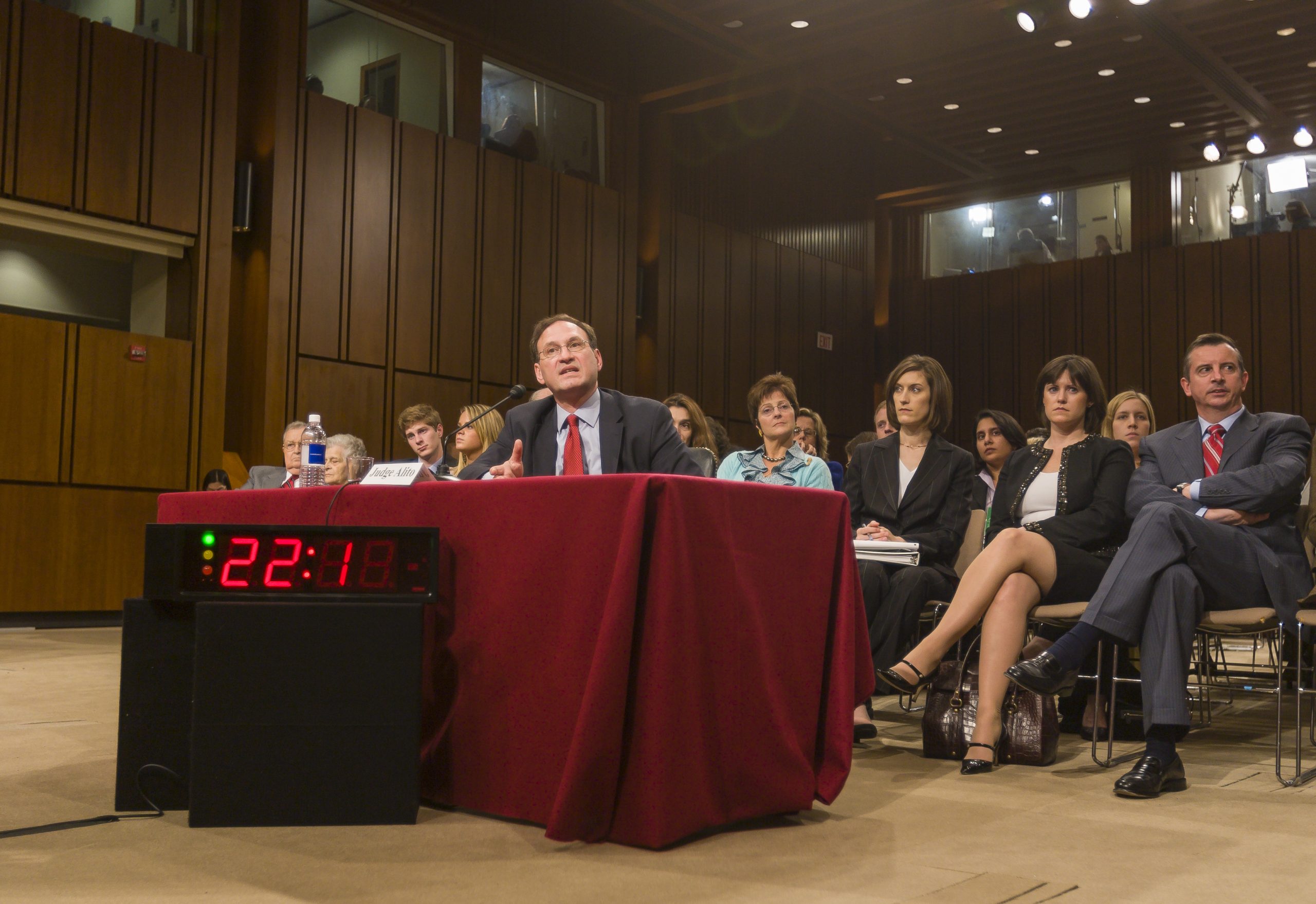Latest Federal Court Cases – May 2024 #4 | Schwabe, Williamson & Wyatt PC
LKQ Corporation v. GM Global Technology Operations LLC, Appeal No. 2021-2348 (Fed. Cir. May 21, 2024)
In a rare en banc opinion, the Federal Circuit overruled decades of prior precedent concerning the standard to evaluate the obviousness of design patents. The Court created a new standard relying on principles adapted from utility patent jurisprudence.
At issue was the Rosen/Durling test, which takes its name from In re Rosen, 673 F.2d 388, 391 (CCPA 1982) and Durling v. Spectrum Furniture Co., Inc., 101 F.3d 100, 103 (Fed. Cir. 1996). In re Rosen requires that, before one can begin to combine prior art designs, one must find a single reference, “a something in existence, the design characteristics of which are basically the same as the claimed design.” For example, in Rosen, the design was for a table. The closest piece of prior art was a desk, and the Patent Office found the table design obvious over the desk.
On appeal, the Court, citing decades-old precedent, held the desk was not an acceptable starting point for an obviousness analysis. The Court explained, “If the [] desk design is modified only to the extent that it becomes a table, it does not thereby have the design characteristics of appellant’s table. . . . Nor does the [] desk design meet the test of a basic design reference in which features might reasonably be interchanged with or added from those in other pertinent references to achieve appellant’s design.”
Since then, the Patent Office and the courts have required a primary reference that is “basically the same as the claimed design,” and the obviousness analysis proceeds from there.
In 2007, the Supreme Court issued its opinion in KSR Int’l Co. v. Teleflex Inc., 550 U.S. 398 (2007), overruling the Federal Circuit’s then-used standard for finding obviousness in the utility patent context. Specifically, the Supreme Court found the Federal Circuit’s “teaching, suggestion, or motivation” to be too rigid, and reverted to “an expansive and flexible approach” that eschewed “rigid and mandatory formulas” and “formalistic conception.”
In this case, which arose from an IPR proceeding, the Board found that LKQ had not established that the design patent at issue was obvious because LKQ had not identified sufficient “Rosen reference.” LKQ appealed, arguing that the Rosen/Durling test was implicitly overruled by KSR. In a non-precedential opinion, which we wrote up last year, a panel of the Federal Circuit disagreed. The Court thereafter agreed to take the case en banc.
In this week’s opinion, the Court agreed that the Rosen/Durling tests were inconsistent with KSR, and thus overruled Rosen and Durling. Having concluded as much, the Court went on to establish a new test, which closely hews to the test set forth in Graham v. John Deere Co. of Kansas City, 383 U.S. 1 (1966).
First, the fact finder should consider the scope and content of the prior art. The Court held that an analogous art requirement applies to each reference, like with respect to utility patents. This is a new development, as the Court’s predecessor court held that the analogous art requirement was not applicable to design patents. However, the Court did “not delineate the full and precise contours of the analogous art test for design patents,” leaving that “to future cases to further develop the application of this standard.” From the prior art, a primary reference must be identified.
At step two, the differences are compared between the prior art and the claimed invention. At step three, the designer of ordinary capability who designs articles of the type presented in the application is considered. At step four, the factfinder must determine whether the ordinary designer in the field would have been motivated to modify the prior art design to create the same overall visual appearance as the claimed design. At step five, objective indicia of nonobviousness may be considered.
Judge Lourie concurred in the judgment, but believed the majority went further than necessary in holding Rosen and Durling “overruled.” He would have “modified” their holdings.
The opinion can be found here.
By Nika Aldrich
ALSO THIS WEEK
Ulrich Speck v. Brian L. Bates, Appeal No. 2023-1147 (Fed. Cir. May 23, 2024)
In a patent interference proceeding under pre-AIA law, the Federal Circuit clarified the test for determining whether a party had been claiming “substantially the same invention” for purposes of invoking an exception to the time bar provisions of 35 U.S.C. § 135(b)(1), making clear that to be “substantially the same,” post-critical date claims must be neither materially narrower than nor materially broader than pre-critical date claims.
Under pre-AIA law, § 135(b)(1) typically bars an interference as between any new patent claim and a claim that had issued in a patent grant more than one year previously, but with a recognized exception for when the later claimant had already been claiming substantially the same invention prior to that critical date, such that the Patent Office in fairness ought to have declared an interference earlier. In this case, a group of inventors referred to as “Bates” had copied claims from a patent issued to another group of inventors (“Speck”) prior to the one-year critical date in order to provoke an interference, but then amended the claims after the critical date, adding a negative limitation in order to overcome a prior art rejection. The Patent Trial and Appeal Board found that the post-critical date claims were substantially the same as the pre-critical date claims because all limitations in the later claims were present or necessarily resulted from Bates’ earlier claims—i.e. that the later claims were not narrower than the earlier claims—and so found an interference-in-fact, and ultimately awarded priority to Bates. On appeal, however, the Federal Circuit agreed with Speck that the Board erred by not also considering whether the post-critical date claims were broader than the pre-critical date claims, finding support in Court of Customs and Patent Appeals precedent for such a “two-way test” for determining whether claimed inventions are substantially the same. The Court went on to find that Bates’ post-critical date amendment to add the specific negative limitation at issue had rendered its claims materially broader than the pre-critical date claims, such that the claimed inventions were not “substantially the same” for purposes of invoking the exception to § 135(b)(1). Accordingly, the Court found that any interference with Speck’s patent resulting from Bates’ new claims was time-barred; vacated the decision awarding priority to Bates; and remanded for further proceedings.
The opinion can be found here.
By Jason A. Wrubleski
Core Optical Technologies, LLC v. Nokia Corporation, Appeal Nos. 2023-1001, -1002, -1003 (Fed. Cir. May 21, 2024)
Also this week, the Federal Circuit reversed the District Court for the Central District of California’s summary judgment to Nokia, because an ambiguous assignment agreement created a genuine dispute of material fact as to who owned an asserted patent.
Core Optical had sued Nokia, Adva, and Cisco, asserting U.S. Patent No. 6,782,211. Nokia moved for, and the district court granted, summary judgment against Core Optical, on the basis that the inventor of the ‘211 patent, Dr. Core, had previously assigned the ‘211 patent to his prior company, TRW, such that Core Optical did not own the ‘211 patent and did not have standing. Dr. Core developed the claimed invention during his TRW-funded PhD studies, when he also worked part time for TRW. Dr. Core’s assignment agreement with TRW contained an exception for things created “entirely on [Dr. Core’s] own time,” and the parties disagreed as to whether “entirely on [Dr. Core’s] own time” included time spent on his PhD, where Dr. Core was not being directed by TRW to do certain work as part of his part-time job for TRW, or if it included only the time outside of both his part-time job and the TRW-funded PhD. The district court determined there was no genuine dispute of material fact; the time spent on Dr. Core’s PhD was at least in part on TRW’s time, as opposed to “entirely on [Dr. Core’s] own time,” because Dr. Core sought and received TRW funding to pursue the PhD, and because as a condition to the funding Dr. Core had to choose a PhD relevant to TRW’s business and then work for TRW for a year post-graduation. The Federal Circuit disagreed, finding that the “entirely on [Dr. Core’s] own time” contract language was ambiguous such that either side’s interpretation was plausible. Thus, the Federal Circuit vacated and remanded for further proceedings to determine on whose time the claimed invention was created.
The opinion can be found here.
By Tyler Hall
Dragon Intellectual Property LLC v. Dish Network L.L.C., Appeal Nos. 2022-1621, -1622, -1777,-1779 (Fed. Cir. May 20, 2024)
In an appeal from the United States District Court for the District of Delaware, the Federal Circuit addressed a number of issues related to Dish’s motion for attorney’s fees, including (1) whether the district court had erred in finding that these cases were “exceptional” under § 285; (2) whether the district court erred in denying attorney’s fees during the IPR proceedings; and (3) whether the district court erred in denying to hold Dragon’s counsel jointly and severally liable for fees. The Federal Circuit affirmed. First, the Court found that the district court did not abuse its discretion when finding the cases exceptional because the vacatur of noninfringement judgment did not entitle Dragon to a do-over. Even so, the magistrate judge independently considered the prosecution history when analyzing exceptionality. Second, the Federal Circuit found that §285 does not entitle Dish to recover fees incurred during their voluntary participation in IPR proceedings. Further, the Federal Circuit rejected Dish’s argument that liability should extend to Dragon’s counsel, finding neither the statute nor precedent allows for recovery of fees and costs from counsel. Judge Bencivengo, sitting by designation, dissented in part, on the denial of recovery of fees from the IPR proceedings.
The opinion can be found here.
By Brittani Gambrell






